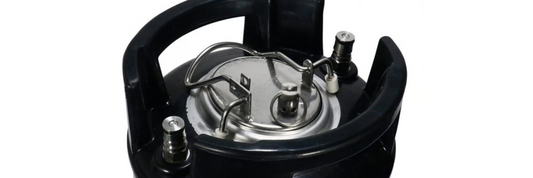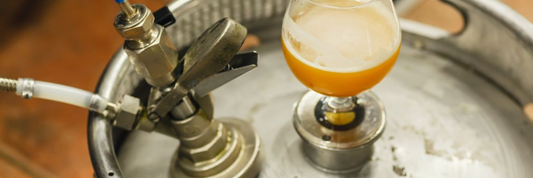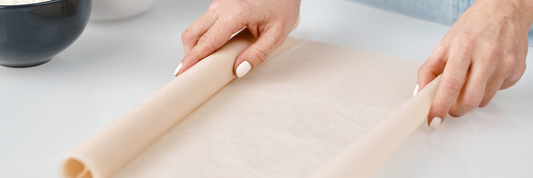Being one of the most common plastic item used, plastic bottles are handy and convenient but is it safe to reuse plastic bottles? This post dives into plastic types, reuse safety, microplastic pollution, temperature limits, recycling limitations, and exciting advancements in sustainable plastics.
- Which Number Plastic Bottles Are Safe for Drinking Water?
- Which Plastic Bottles Are BPA-free?
- Are Plastic Bottles Recyclable? 5 Facts of Plastic Bottle Recycling You Should Know
What Are Plastic Bottles Made of?
Plastic bottles come in various types, identified by recycling codes (1-7) on the bottom, showing in the table below:
|
Number |
Resin Type |
Abbreviation |
|
1 |
Polyethylene Terephthalate |
PET or PETE |
|
2 |
High-Density Polyethylene |
HDPE |
|
3 |
Polyvinyl Chloride |
PVC |
|
4 |
Low-Density Polyethylene |
LDPE |
|
5 |
Polypropylene |
PP |
|
6 |
Polystyrene |
PS |
|
7 |
Other |
- |
Not all types of plastic above can be used to make plastic bottles. Plastic bottles predominantly utilizes two primary types of plastic:
#1 PET or PETE (Polyethylene Terephthalate)
PET, also known as PETE, is widely used in the production of various types of plastic bottles. This type of plastic is transparent, lightweight, and durable, making it suitable for packaging carbonated beverages, water, and food items. PET plastic is generally considered safe for one-time use, but reusing it may present some concerns.
#2 HDPE (High Density Polyethylene)
HDPE, another common plastic used in packaging, offers excellent strength and resistance to moisture and chemicals. Milk jugs, shampoo bottles, and detergent containers are often made from HDPE. This plastic has a lower risk of leaching harmful chemicals and is considered relatively safe for reuse, especially when properly washed and dried.
#7 Other
This category includes various plastics, some containing BPA, an endocrine disruptor linked to health concerns. Avoid heating or reusing #7 bottles. Large water containers (3+ gallons) may also fall under this code.
Is It Safe to Reuse Plastic Bottle?
While refilling a plastic water bottle instead of buying a new one might seem like a win for the environment, there are some potential downsides to consider. Here's why reusing certain plastic bottles might not be the best idea:
- Microplastic Contamination: Over time, plastic can break down, especially when exposed to heat, sunlight, or harsh chemicals like dish soap. This breakdown can potentially cause microscopic bits of plastic to leach into the contents of the bottle. While research on the health effects of this is ongoing, it's best to err on the side of caution.
- Bacterial Battleground: Scratches and cracks in plastic bottles, which can develop from wear and tear or even vigorous cleaning, can become breeding grounds for bacteria. These tiny crevices can be difficult to clean thoroughly, even with hot water and soap. This increases the risk of ingesting harmful bacteria when you refill and reuse the bottle.
However, if you decide to reuse plastic bottles, follow these guidelines for safety:
- Choose bottles made from HDPE whenever possible, as they have a lower risk of leaching chemicals.Thoroughly wash plastic bottles with mild soap and warm water.
- Inspect the bottles for any signs of damage or wear, and discard them if necessary.
- Do not expose plastic bottles to high temperatures, such as in dishwashers or microwaves, as heat can accelerate the release of chemicals.
Remember, to reuse plastic bottles safe, it’s need to understand the type of plastic and follow safety guidline. In addition, it is always better to opt for reusable stainless steel or glass bottles to ensure long-term safety and reduce plastic waste.

What is Microplastic Pollution?
Microplastics, tiny plastic particles measuring less than 5mm in size, have become a major concern for environmentalists and health experts alike. These particles are often derived from the breakdown of larger plastic objects, including plastic bottles. Microplastics are pervasive, polluting our oceans, rivers, and even the air we breathe.
While the full extent of the impact of microplastic pollution on human health is still being researched, studies have suggested potential risks, such as inflammation, organ damage, and even a higher risk of certain cancers. To minimize exposure to microplastics, it is advisable to reduce the consumption of single-use plastics, including plastic bottles, and opt for sustainable alternatives.
How Does Food Packaging Impact the Environment?
Safe Use Temperature for All Types of Plastic Packaging
Understanding safe temperature limits for plastic packaging is crucial to minimizing potential health risks. Heat can accelerate the process of chemical leaching, especially from plastic bottles.
Here are the safe temperature ranges for different types of plastic packaging:
- PET (PETE): It is recommended to avoid exposing PET bottles to temperatures above 122°F (50°C).
- HDPE: HDPE bottles can withstand temperatures up to 176°F (80°C), making them suitable for hot beverages.
By adhering to these temperature guidelines, you can minimize the release of chemicals from plastic bottles and reduce potential health risks.
Not All Plastic Bottles Can Be Recycled
Plastic bottles are handy but pose environmental challenges. Recycling offers a lifeline, transforming them into new products and reducing reliance on virgin plastic. While sorting codes might not be crucial, a quick rinse before recycling goes a long way.
Simplifying Sorting
While some recycling programs might still utilize sorting codes, the good news is you often don't need to worry about them at home! Most modern facilities have automated sorting systems that accurately separate different plastics. However, a simple rinse is crucial before tossing your bottle in the recycling bin.
Rinse and Recycle Right
Here's a quick guide to ensure your plastic bottles get recycled effectively:
- Give it a Rinse: Quickly rinse out any leftover liquid or residue. This helps keep the recycling process clean and efficient.
- Check Local Guidelines: While sorting codes might not be a primary concern, it's always a good practice to check with your local recycling center for any specific requirements in your area. They might have limitations on certain types of plastic or require additional sorting steps.
- Limit Code #7: Plastic bottles with the recycling code #7 typically can't be recycled and often contain BPA, a chemical linked to health concerns. Consider reducing your use of these bottles for a more sustainable approach.
Remember, reuse plastic bottle to reduce your consumption of plastic and opting for reusable alternatives is the most effective way to combat plastic pollution and contribute to a sustainable future.
New Innovations in Plastic
Amidst the growing concerns surrounding plastic pollution and safety, innovative solutions are emerging. Researchers and entrepreneurs are exploring various alternatives to traditional plastics, such as biodegradable materials made from plant-based sources and compostable plastics. These innovations aim to provide packaging options that are more environmentally friendly and safer for reuse.
Although these new solutions are promising, the widespread adoption and implementation of these alternatives on a global scale will take time. In the meantime, it is important to remain informed and make responsible choices when it comes to plastic bottle usage.
Conclusion
Reuse plastic bottles is a complex topic that warrants careful consideration. While some plastics are relatively safer for reuse, precautions must be taken to minimize potential health risks. It is advisable to prioritize reusable stainless steel or glass bottles whenever possible. By reducing our reliance on single-use plastics, understanding recycling limitations, and embracing innovative alternatives, we can collectively work towards a more sustainable future and protect both our health and the environment.









